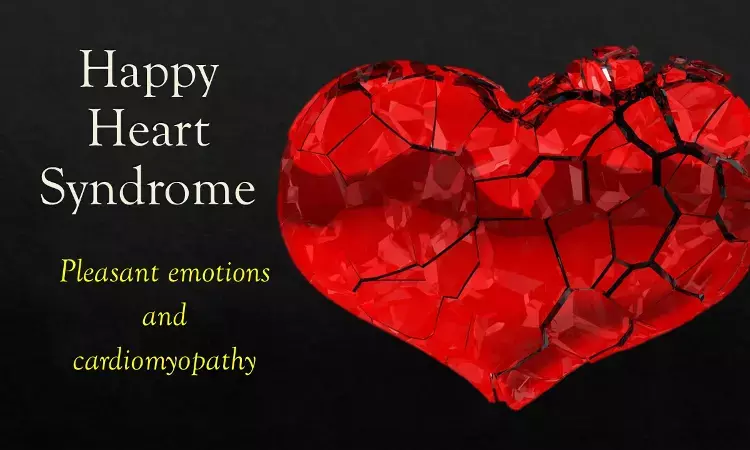- Home
- Medical news & Guidelines
- Anesthesiology
- Cardiology and CTVS
- Critical Care
- Dentistry
- Dermatology
- Diabetes and Endocrinology
- ENT
- Gastroenterology
- Medicine
- Nephrology
- Neurology
- Obstretics-Gynaecology
- Oncology
- Ophthalmology
- Orthopaedics
- Pediatrics-Neonatology
- Psychiatry
- Pulmonology
- Radiology
- Surgery
- Urology
- Laboratory Medicine
- Diet
- Nursing
- Paramedical
- Physiotherapy
- Health news
- Fact Check
- Bone Health Fact Check
- Brain Health Fact Check
- Cancer Related Fact Check
- Child Care Fact Check
- Dental and oral health fact check
- Diabetes and metabolic health fact check
- Diet and Nutrition Fact Check
- Eye and ENT Care Fact Check
- Fitness fact check
- Gut health fact check
- Heart health fact check
- Kidney health fact check
- Medical education fact check
- Men's health fact check
- Respiratory fact check
- Skin and hair care fact check
- Vaccine and Immunization fact check
- Women's health fact check
- AYUSH
- State News
- Andaman and Nicobar Islands
- Andhra Pradesh
- Arunachal Pradesh
- Assam
- Bihar
- Chandigarh
- Chattisgarh
- Dadra and Nagar Haveli
- Daman and Diu
- Delhi
- Goa
- Gujarat
- Haryana
- Himachal Pradesh
- Jammu & Kashmir
- Jharkhand
- Karnataka
- Kerala
- Ladakh
- Lakshadweep
- Madhya Pradesh
- Maharashtra
- Manipur
- Meghalaya
- Mizoram
- Nagaland
- Odisha
- Puducherry
- Punjab
- Rajasthan
- Sikkim
- Tamil Nadu
- Telangana
- Tripura
- Uttar Pradesh
- Uttrakhand
- West Bengal
- Medical Education
- Industry
Pleasant emotions may trigger cardiomyopathy, JACC study describes a new entity- the "Happy-heart syndrome"

Takotsubo syndrome (TTS) has been known to follow stressor and negative emotions before TTS are common leading to the popular term "broken heart syndrome." In contrast, cardiomyopathy following pleasant triggers - happy heart syndrome has recently been described in the latest edition of JACC HF. Authors Stiermaier et al have shown that this rare type of TTS is characterized by a higher prevalence of male patients and atypical, nonapical ballooning compared with patients with negative emotional stressors.
Patients enrolled in the international GEIST registry were categorized according to their stressors. This analysis compared patients with pleasant emotional events with patients with negative emotional events.
The study group was stratified by the preceding stressors, which were classified as "physical," "emotional," or "no identifiable trigger" according to the nature of the episodes. Emotional triggers were further categorized as "broken hearts" in case of negative emotional events and "happy hearts" in case of positive emotional events, which comprised the main focus of this study.
The main results of this study were as follows:
1) Joyful triggers can also provoke TTS in <5% of emotionally triggered and <2% of all cases;
2) Patients with happy heart syndrome are more frequently male and exhibit a higher prevalence of atypical, nonapical ballooning compared with patients with broken heart syndrome; and
3) In-hospital complications and long-term mortality are similar in cases with positive and negative emotional events, despite numerically lower event rates in patients with happy heart syndrome.
The initial assumption that TTS is primarily triggered by negative emotional stress was corrected by multiple subsequent studies showing that the syndrome can also be triggered by physical events or can occur without an evident stressor.
Although still incompletely understood, a brain-heart interaction with sympathetic overdrive and catecholamine excess are most likely key factors in the pathophysiology of TTS. Thus, probably a catecholamine surge derived from positive or negative stimuli can also be deleterious.
Why happy heart syndrome is rare?
Authors argue that "a potential reason is that intense positive emotions in life are less frequent than negative emotions, or, more reasonably, there are some central modulators involved in an obviously better emotional management of good rather than bad news."
This international, multicenter registry study reports the largest currently published cohort of patients with happy heart syndrome and expands our knowledge of this rare disease. Compared with patients with a negative preceding stressor, patients with pleasant triggers were more frequently male and had a higher prevalence of atypical, nonapical contraction patterns, particularly midventricular ballooning. In-hospital complications and long-term mortality rates were similar among "broken hearts" and "happy hearts."
Source: JACC HF: DOI: 10.1016/j.jchf.2022.02.015
MBBS, MD , DM Cardiology
Dr Abhimanyu Uppal completed his M. B. B. S and M. D. in internal medicine from the SMS Medical College in Jaipur. He got selected for D. M. Cardiology course in the prestigious G. B. Pant Institute, New Delhi in 2017. After completing his D. M. Degree he continues to work as Post DM senior resident in G. B. pant hospital. He is actively involved in various research activities of the department and has assisted and performed a multitude of cardiac procedures under the guidance of esteemed faculty of this Institute. He can be contacted at editorial@medicaldialogues.in.
Dr Kamal Kant Kohli-MBBS, DTCD- a chest specialist with more than 30 years of practice and a flair for writing clinical articles, Dr Kamal Kant Kohli joined Medical Dialogues as a Chief Editor of Medical News. Besides writing articles, as an editor, he proofreads and verifies all the medical content published on Medical Dialogues including those coming from journals, studies,medical conferences,guidelines etc. Email: drkohli@medicaldialogues.in. Contact no. 011-43720751


